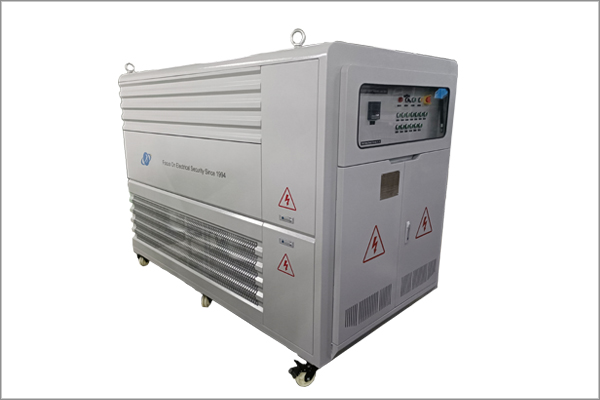The Operating Environment of Resistive-Capacitive Load Banks
Time:2024-08-23
Resistive-capacitive load banks (RLC load banks), as crucial testing equipment in the power and telecommunications industries, are widely utilized in the performance evaluation and aging tests of online high-power UPS systems, inverters, switching power supplies, and diesel generators. With their unique ability to adjust power factors and their combination of various load types (resistors, inductors, capacitors), they excel in various complex environments. This article will delve into the operating environments of resistive-capacitive load banks and their distinctive characteristics.


1000kW load bank
I. Data Centers and Server Rooms
Data centers and server rooms are vital infrastructures in today's information society, housing mostly capacitive loads such as servers. Resistive-capacitive load banks hold significant value in these environments. By adjusting the power factor to lead or lag, they can simulate the actual load conditions of data centers and server rooms, accurately assessing the performance of generators and power equipment. Furthermore, they help detect the stability of power equipment under capacitive loads, ensuring the smooth operation of data centers and server rooms.
II. Power and Telecommunications Systems
In power and telecommunications systems, resistive-capacitive load banks also play a pivotal role. Generators in power systems require regular performance tests to ensure stable power supply in emergency situations. By simulating various load conditions, including pure resistive, inductive, capacitive, and mixed loads, resistive-capacitive load banks comprehensively evaluate generator performance. In telecommunications systems, they test the stability of power equipment under complex loads, safeguarding the operation of communication networks.
III. Industrial Production Environments
In industrial production, high-power equipment like motors and transformers generates substantial inductive loads during operation. Resistive-capacitive load banks simulate these inductive loads to test power equipment. Moreover, industrial environments demand high reliability and stability from power sources. By precisely adjusting the power factor, resistive-capacitive load banks assess power equipment's performance under different loads, ensuring the stable operation of production lines.
IV. Scientific Research and Teaching Experiments
In scientific research and teaching, resistive-capacitive load banks are indispensable experimental equipment. Researchers utilize them for experimental studies on power electronics technology, exploring new power technologies and equipment. In teaching experiments, they help students understand the working characteristics of power equipment under different loads, deepening their understanding of power electronics.
V. Other Operating Environments
Besides the aforementioned primary operating environments, resistive-capacitive load banks are suitable for various situations requiring power equipment testing. For instance, in the aerospace industry, the stability and reliability of power equipment are paramount. Resistive-capacitive load banks test aircraft power equipment under complex loads. In marine engineering and shipping, they evaluate the performance of marine generators under different sea conditions.
Conclusion
Resistive-capacitive load banks, with their unique ability to adjust power factors and combine various load types, find extensive applications in power, telecommunications, data centers, industrial production, and more. Their precision in simulating actual load conditions enhances the accuracy and reliability of power equipment testing. As technology advances, the application scope of resistive-capacitive load banks will continue to expand, providing robust support for power equipment testing across multiple fields.
News Recommendation
-
 2024-09-11
2024-09-11TRIUMPH LOAD EXHIBITING AT Enlit Europe 2024 -BOOTH 7.H08
-
 2023-04-21
2023-04-21TRIUMPH LOAD EXHIBITING AT DATA CENTER WORLD GERMANY 2023-BOOTH F909
-
 2023-04-06
2023-04-06TRIUMPH LOAD EXHIBITING AT ELECTRIC POWER TECH KOREA 2023 – Booth G109
-
 2022-05-05
2022-05-05What is the role of ac load bank for power supply?
-
 2022-05-05
2022-05-05What is the role of the load bank?

